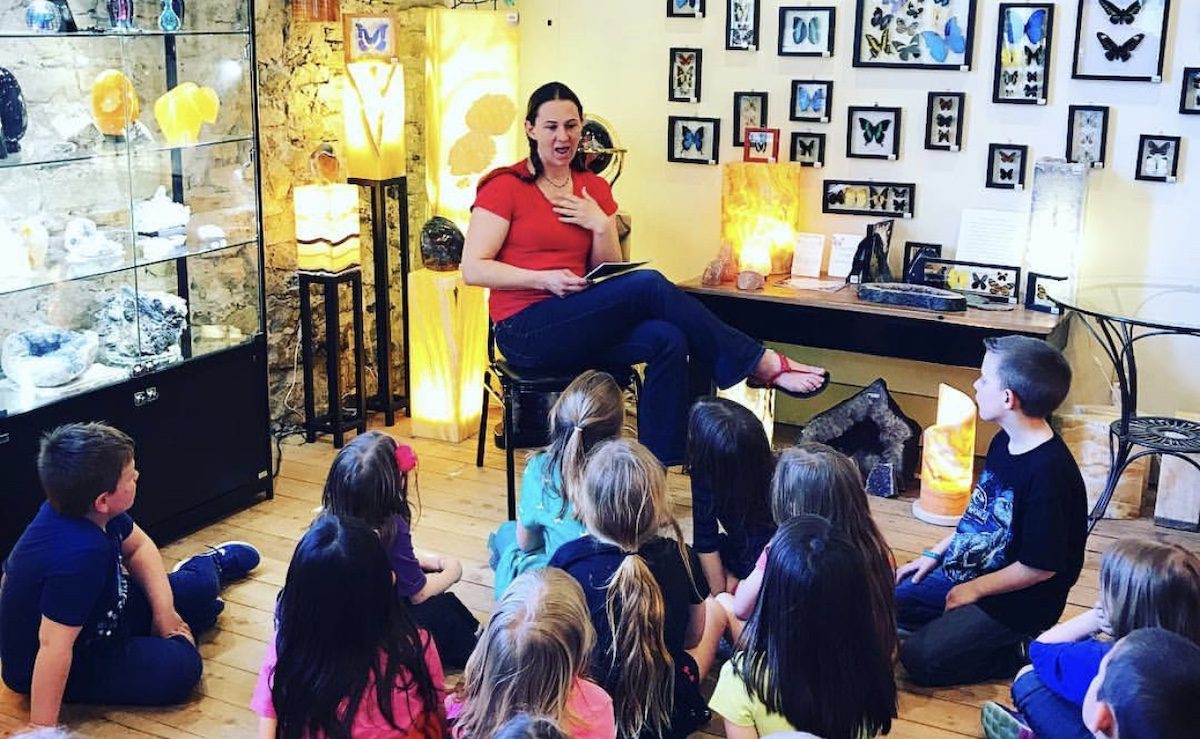Introducing new and exciting artists in your classroom can be a powerful experience. But, have you ever thought to bring in visiting authors?
There are so many ways to express creativity. Whether it’s artmaking, dance, music, performance, storytelling, writing, or more, it’s up to us to show our students the possibilities available to them.
Try partnering with authors for the ultimate student engagement experience!

There are so many benefits to inviting authors into your school environment. You may already have a classroom library filled with beautiful books. Students love storytime, especially when it is connected to something they are learning about in the art room. The added potential of scheduling an author visit opens doors and gives your students a plethora of new experiences.
Learn more with PRO Learning Pack Incorporating Reading at the Elementary Level
Here are a few benefits to inviting authors into your art room:
1. Connect to students who are interested in writing.
A handful of students may prefer to write a story or poem rather than create a piece of artwork. Bringing in visiting authors will help you connect with those students who are excited about writing. Authors have a way of inspiring many to see the value and beauty of the written word.
2. Showcase careers in art.
Not all of the students who come through our art program will grow up to be professional artists. It’s a fact. However, these students will hopefully connect with something they learned in our art room. Whether it was how to persevere through a problem, how to practice an idea before making it a reality, or learning there are many careers in art beyond being an artist. By showcasing the creative nature of being a writer, you can show students the possibility of being an author or writer as a career.
3. Hear from inspirational creators.
Hearing about the creation process can be just as interesting as the final product. Giving your students a chance to listen to a new voice will always be an exciting and engaging break from the norm. When you are looking for authors that would be awesome to connect to your art curriculum, think about what kind of message these authors are creating and how it will inspire your artists.
4. Advocate for your art department.
By showing off what is happening in your classroom to people outside in the community, you are advocating for what your art program is doing for students. Making connections with other people who can speak to the benefit of the arts will only further solidify your program.
The benefits are clear. So, how do you actually connect with authors? There are a few ways to get started.
First, look for local authors in your community you can connect with. For example, Jessie Stevens, author of What if Butterflies Loved Snow?, is a parent at our school and has authored a children’s book, making for a perfect connection.
We arranged a walking tour to Ruby Rose Gallery, our local rock shop, where Jessie’s book is available for purchase. She did a read-aloud of her book, then students asked questions and explored the shop’s treasures.
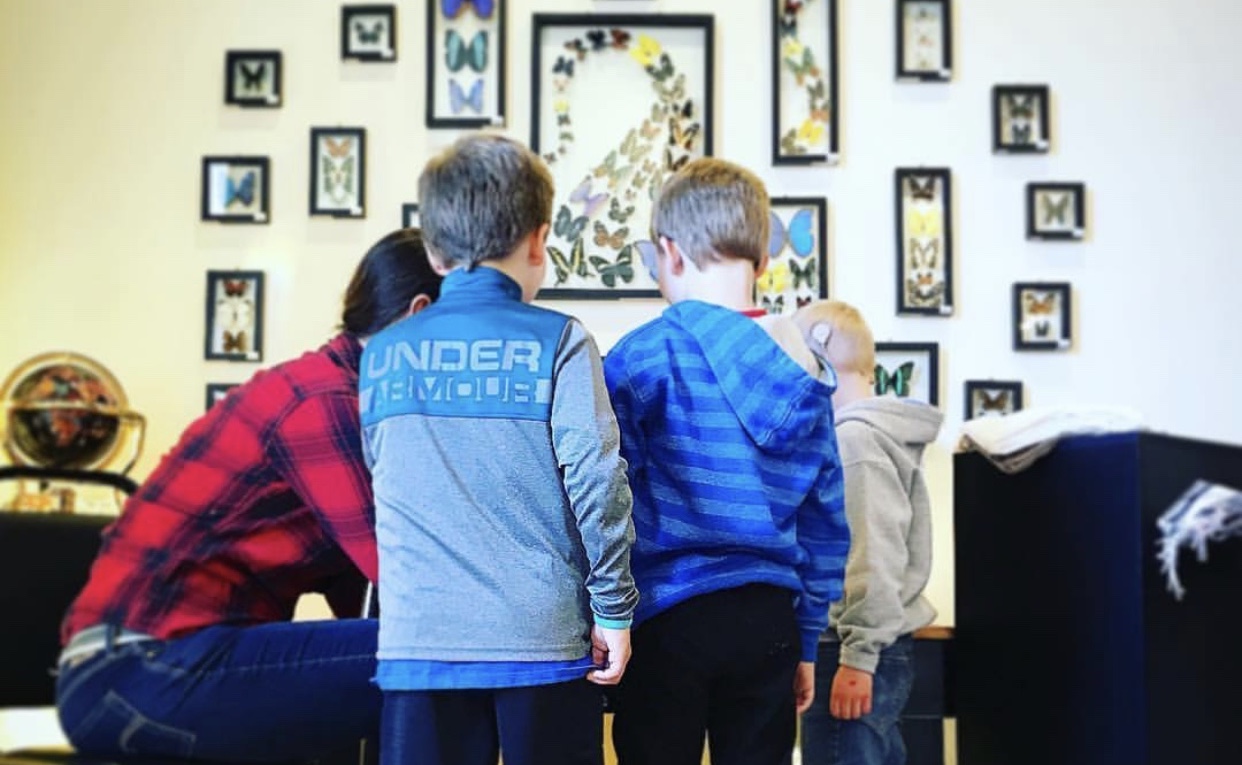
Regarding the experience, Jessie says, “I loved the interactions and connections I made with the kids when I visited with art classes. But more importantly, I feel that it helped them realize that ‘regular’ people can be artists, too. Authors and artists aren’t some sort of mythical beasts who churn out artwork in a lonely tower. We have kids; we go fishing, we do cartwheels, we are human—just like them. That I may have helped the kids realize that and plant a tiny ‘what if’ seed for their own future is what made walking field trips with the art classes my favorite author visit to date.”
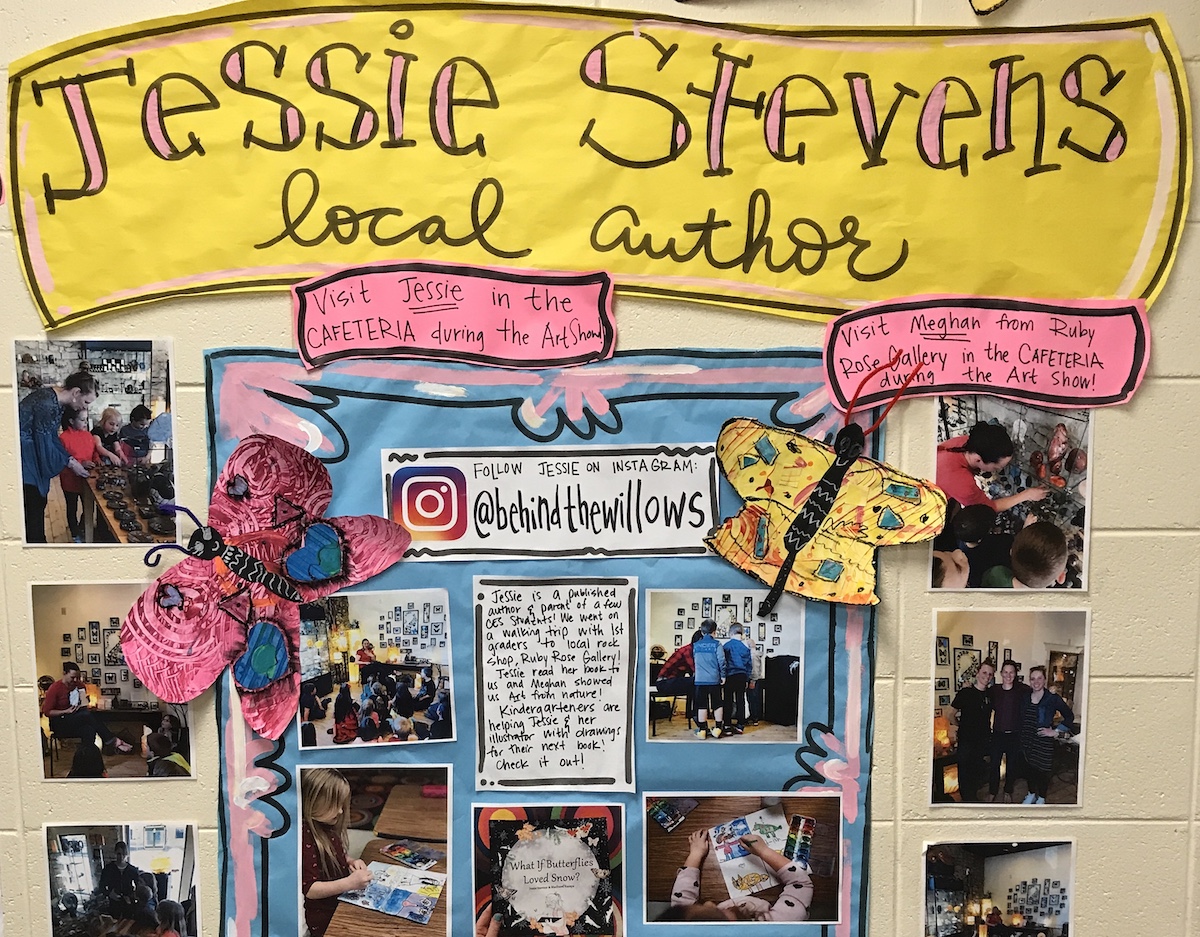
If you are having a hard time finding local authors like Jessie, try searching a little further outside your area. For example, keep your eyes peeled for author visit grants or simply reach out to an author via social media. If you can’t arrange a physical author visit, check to see if the author is open to a video visit. Also, when reading to students, make an effort to show and tell students about the background of the author and the illustrator of book.
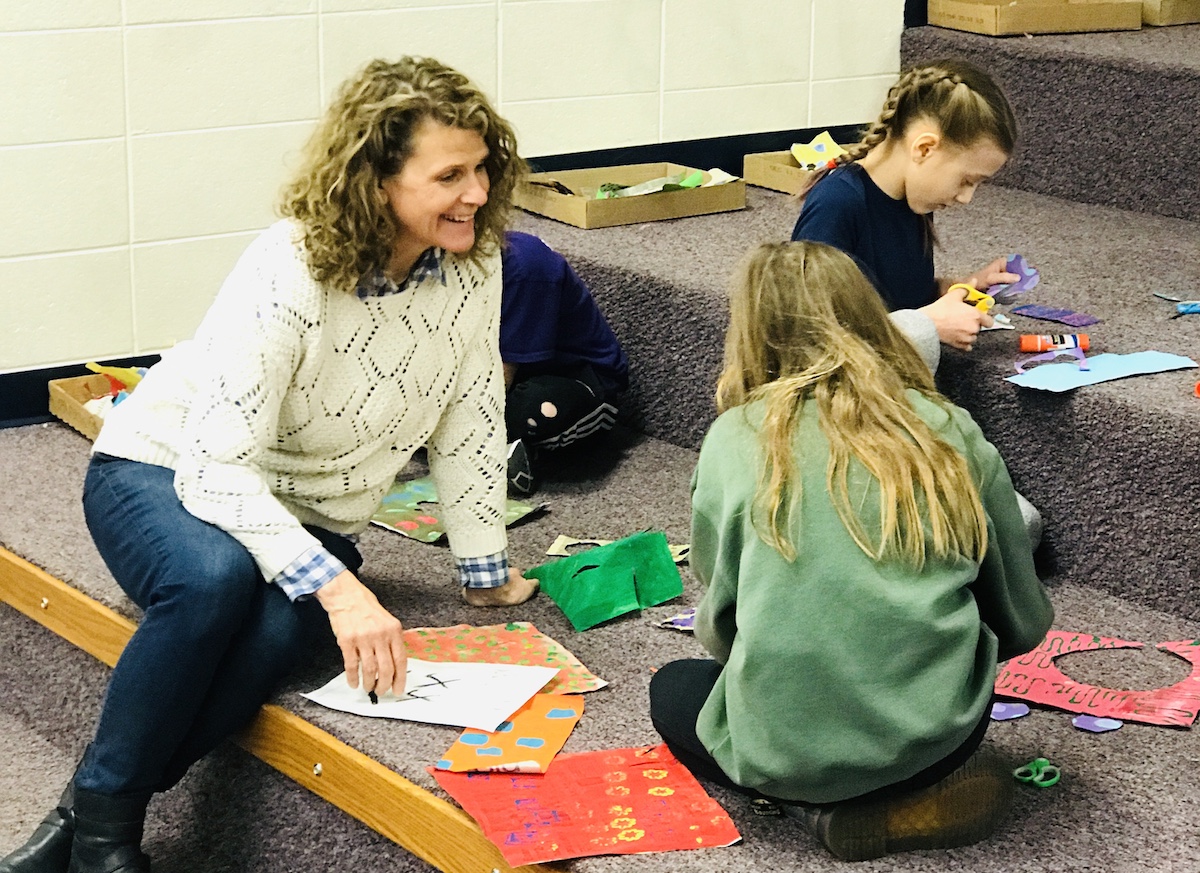
One of our favorite author and illustrator visits was with Jeanne Styczinski. As a former kindergarten teacher, Jeanne has a special eye for creating beautifully written stories and collaged artwork to inspire young artists. Check her out on Instagram or her website. You can also listen to her podcast episode of Everyday Art Room!
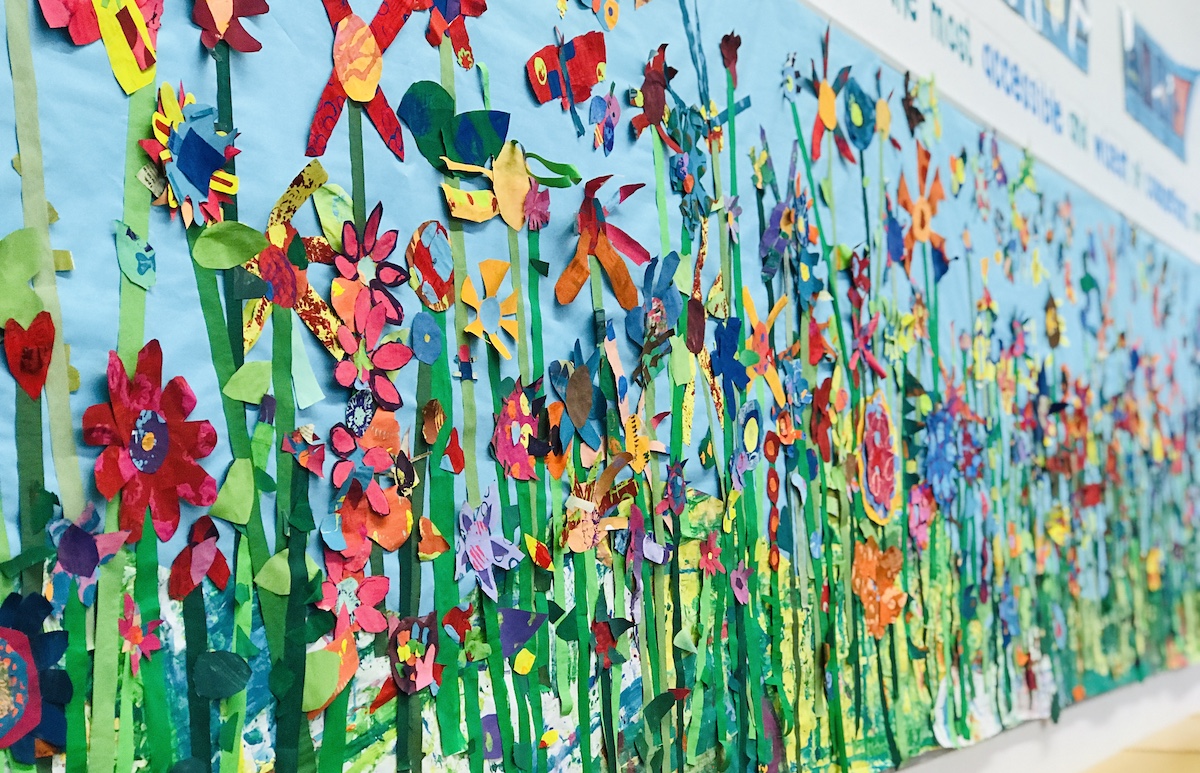
Jeanne visited our school and helped us create a massive collaborative painted paper mural that included every student in our school.
Jeanne reflects, “I love visiting schools as an author/illustrator. During my school visits I have observed many positive benefits. I see students and staff become inspired to read and write more and to do art. Also, during my visits I see students engaged in a joyful learning experience, which to me means students are actively learning and gathering information and making connections to other curriculum areas. But, what I see as one of the biggest benefits of having an author/illustrator visit, is it provides a common experience for all students (no matter your background) that teachers can teach from.”

Your students will love visiting with authors and connecting with the world of writing. For more on this topic and bringing literacy into your classroom, check out these other great articles.
Learn More
- 10 New Books you Need in Your Classroom Library
- 5 Ways to Bring Literacy into the Art Room
- 70 Children’s Books about Famous Artists
Arranging a visit with an author can help you connect to even more students. The interaction with professional adults in your community will widen their lens as well. With so many benefits, what are you waiting for? Investigate and create an opportunity to arrange an author visit!
What are your favorite books to read to your students?
Why do you think it’s important to show your students about authors AND illustrators?
What are some other benefits of connecting with authors?
Magazine articles and podcasts are opinions of professional education contributors and do not necessarily represent the position of the Art of Education University (AOEU) or its academic offerings. Contributors use terms in the way they are most often talked about in the scope of their educational experiences.
